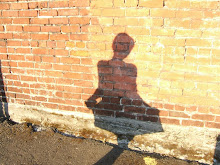
Christine Barrett of Laurelon Terrace wants to be taken out of her home in a body bag. She never thought she would leave her cozy condominium for good while still breathing. Her history books will suffer as well: in her new address—though still undecided—space will be at a premium. Meaning the population of her prized books will diminish. Barrett predicts that her friends will also suffer: when relocating, friends translate to free delivery service. And shoulder to cry on throughout the harrowing process of moving. Especially when that process is forced. And when the home you’re forced to move from has been your home longer than any other house. This is Barrett’s situation, along with her other 133 some neighbors living at Laurelon Terrace.

The Children’s Hospital debate has finally reached a turning point: a few weeks ago, the hospital reached a tentative deal to buy out all of Laurelon Terrace’s condo owners to make way for their large expansion. Good for some, not for others. But for Barrett, who is not shy when stating her negative take on the episode, it’s a chance to “make lemonade when thrown lemons.” Despite the uncomfortable situation, despite leaving a neighborhood that marked Barrett (and that Barrett marked herself, as she wrote “A History of Laurelhurst”), she prefers the sweeter taste that lemons can produce with a little consideration.
Apparently, Children’s needed 100 percent of Laurelon Terrace owners’ approval before acquiring the whole property. Some complexes in Seattle are able to sell with only 80 percent owner approval. A straw poll vote on February 26th showed that the majority of owners are willing to make the move from Laurelhurst. Barrett says this is inevitable. For the amount of money being offered, well, one just couldn’t turn it down, she relents.
The Children’s Hospital expansion has spawned many angry debates and drawn much scrutiny towards Laurelhurst residents. With every neighborly word of protest comes a reprimanding lash from outside the community. Many people don’t understand how residents could possible argue against an expansion of a hospital... let alone one providing groundbreaking care for children. The Children’s Action Commission is a blog dedicated to discussion and information on the hospital’s expansion. They represent the counter argument to some Laurelhurst resident’s fervent oppositions. Their mission reads: “We support an expansion of first-class care throughout Children's state-wide service area while discouraging further concentration of services at a single, congested site.”

Here is a link to what the proposed expansion would look like. Barrett remembered the only compromise the neighborhood has—in her memory—ever made with the hospital: the change from their original “Pepto-Bismol pink” to their current beige. This mock-up is easier on the eye color-wise, but for Barrett and other Laurelhurst residents, color is the least of their worries.





